What is happening around the Renaissance convent of Santo Spirito in Florence, which is in danger of becoming an RSA? The future of the complex is at the center of a debate between, on the one hand, the Augustinian friars who still occupy a part of the ancient complex, the one where the Augustinian Library is still in operation, and on the other hand, a private company, supported by the Ministry of Defense, which instead owns another portion of the building, occupied by the army after the Unification of Italy. After the suppressions of the religious institutes, in fact, the convent was home, from 1871 to 2023, to the Francesco Ferrucci barracks, the Military District of Florence, and then since 2007 to the Army’s Documental Center. The project in question, presented in 2023 by the company Fastpol srl, envisions the transformation of the former Ferrucci barracks, which was housed right in the convent, into a luxury Nursing Home for the Elderly (RSA), flanked by sheltered apartments for the elderly, known as “Senior House.”
The operation kicked off after the Army decided to vacate the barracks space and a bidding process was initiated by the Ministry of Defense, which owns the property through Difesa Servizi spa, an in-house company of the ministry. A 32-year concession for the regeneration of the former Ferrucci barracks is planned for Fastpol, a Florence-based company with 3.5 million euros in turnover and 70 employees specializing in the management of residential care facilities for the elderly and disabled. The competitive bidding process dates back to August 2019, the notice was issued in July 2021, and the award was made in June 2022. Fastpol was the only participant in the call for bids, winning with an economic bid that includes 5 million euros for the concession that Fastpol will pay for with the renovation, plus another 8.3 million to be distributed in a fee over the years, and 2 million to start operations. The project, as stated in 2023 by Asmaa Gacem, an Italian-Moroccan and Fastpol’s sole administrator, envisions “a nursing home with 20 beds, 40 sheltered apartments for elderly people who are still self-sufficient but frail, and a day care center.” Services offered will include a medical center, physiotherapy, hairdressing, assistance and an exclusive restaurant for guests, as well as free access to the Ammannati cloister, which will see the restoration of the ancient frescoes. Prices for the Senior House, according to the company led by Moroccan-Italian entrepreneur Asmaa Gacem, will be in line with the market, starting from 40-50 euros per day, including many services, and a share will be reserved for army retirees. In short, from the statements, no luxury facilities: but this is not enough to stop the naysayers.
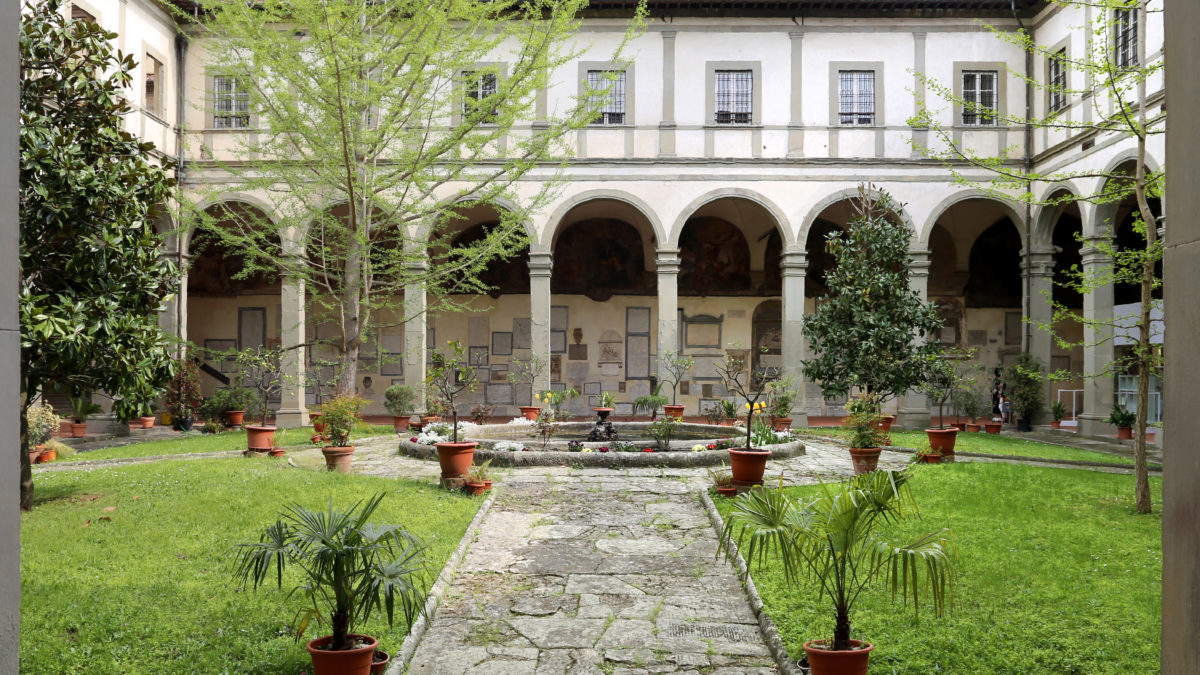
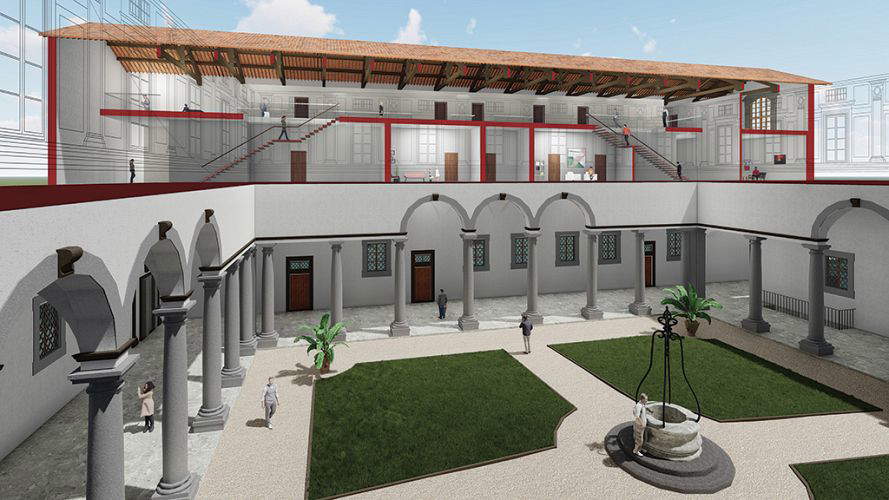
Reaction to the project was immediate and firm, particularly from the Augustinian friars of the convent of Santo Spirito. Father Giuseppe Pagano, prior of the convent, said as recently as last March that the RSA would clash with the centuries-old presence of the friars, and that coexistence would not be possible because of the way the project is designed. He has expressed willingness to stop the operation, even threatening occupation of the premises as a “last resort” if the project goes ahead. Indeed, the concern of those opposed to the project is that the work would distort not only the building but also the entire neighborhood, becoming “a luxury hotel in disguise,” as Massimo Torelli of the Salviamo Firenze committee called it. Father Pagano pointed out that the expropriation of these spaces from the Army in the past was an act of violence and that now, having the opportunity to reunify the complex, it is essential to do so for an end that is good for the city.
Asmaa Gacem, together with her husband Antonio Politano, a consultant, defended her proposal, saying that it is a project that could bring jobs to the city, and then pointed out that the intended use was decided by the municipality years ago and that the Ministry’s notice is equally clear, making it impossible to build a residential or tourist center other than the one planned. However, for the friars, the idea of a for-profit space in here would clash with the identity of the place. Their proposal, therefore, is to make the convent a cultural center. There would already be a plan: together with Villanova University, established in Pennsylvania in 1842 by the very order of St. Augustine, the friars would like to reunify parts of the complex to make it an educational center with classrooms for teaching and study, libraries, laboratories, and services for the neighborhood and the city.
Numerous political forces and public figures have sided with the friars. Last March 20, a presidium was held in Piazza Santo Spirito, which was attended by 250 Florentines including friars, city committees, residents, the Whites of the Historical Calcio and nuns of the Franciscan Third Order, and several city politicians, from Italia Viva (Stefania Saccardi), Lega (Giovanni Galli), Lista Schmidt, Five Star Movement, and Sinistra Progetto Comune (Dmitrij Palagi).
The president of the Tuscany Region, Eugenio Giani, also played an active role in supporting the friars’ cause. After meeting with Father Pagano, Giani said he agreed with the Augustinians’ proposal, considering it “reasonable” and capable of creating aggregation in a structure accessible to all, expressing “much perplexity” about the hypothesis of the luxury RSA. Giani, last December, also sent a letter to Defense Minister Guido Crosetto, asking him to reconsider the allocation and approve the friars’ alternative project. Giani also pointed out that it would be better for the state to accept the proposal of the clerics, since estimates, according to the president, suggest that the state would gain twice as much economic benefit from the friars’ project as the one offered by Fastpol. According to Giani, the Augustinians’ project “would make it possible to restore the unity of the complex, with its extraordinary historical and artistic values, universally known as far as the basilica is concerned, with the facade designed by Brunelleschi and, inside, among many works, Michelangelo’s crucifix.” Moreover, the friars’ proposal, “an alternative to that of an exclusive residence, aims to return this patrimony to the whole of Florence, making it a structure capable of hosting university activities, exhibitions, conferences and other initiatives, without neglecting the possibility of reconstituting the historic library of Santo Spirito, dismembered with the Napoleonic occupation.”
The battle, then, is not just for a building, but for the preservation of the cultural and historical identity of a symbolic place in Florence. The president of District 1, Mirco Rufilli, showed appreciation for the friars’ project, stressing the need for services for citizens in the Oltrarno, rather than a “luxury RSA,” as many call it. Mayor Sara Funaro also expressed her appreciation for the Augustinians’ project, and Father Pagano perceived an “outstretched hand” on her part, as he told the press.
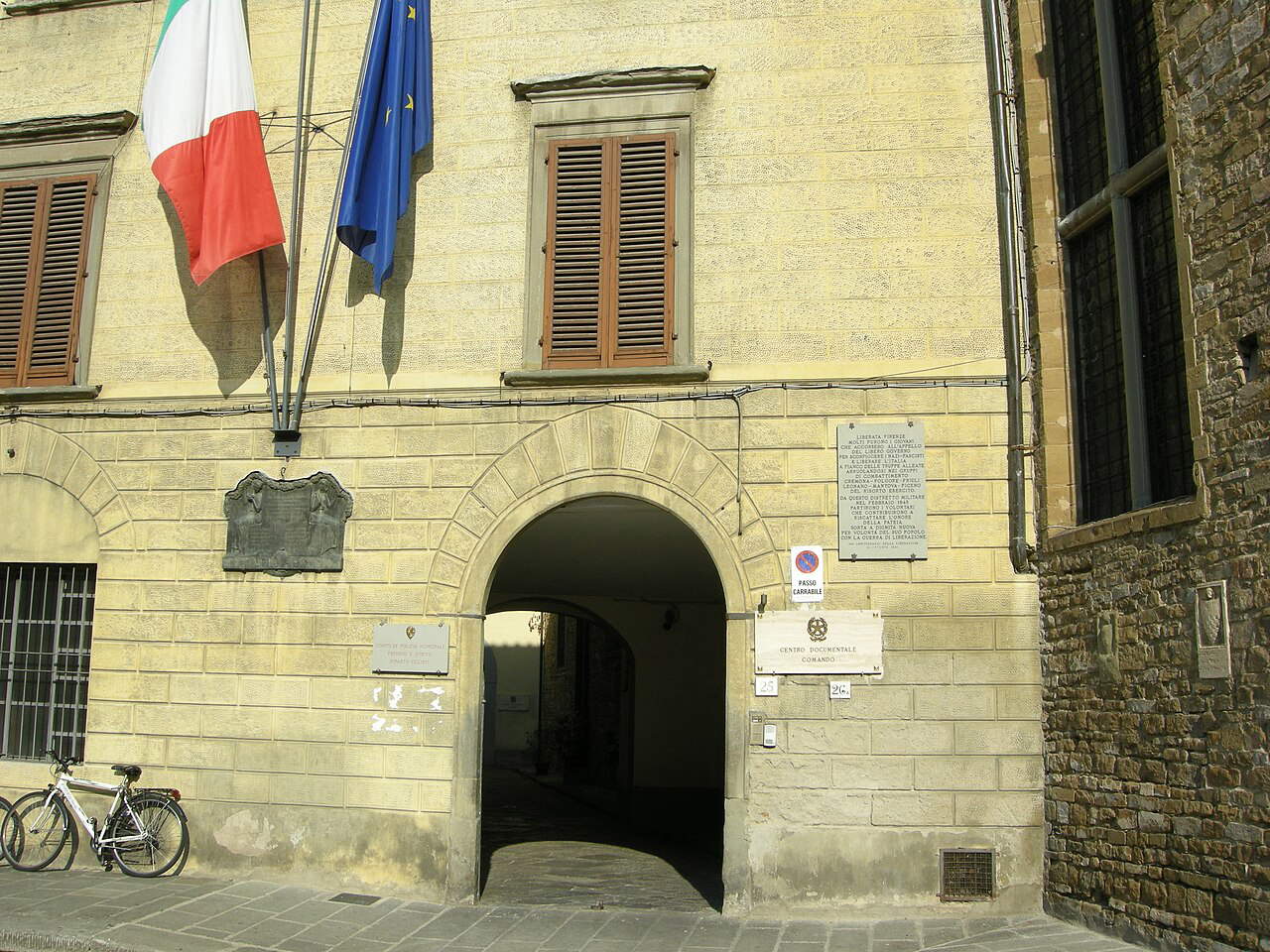
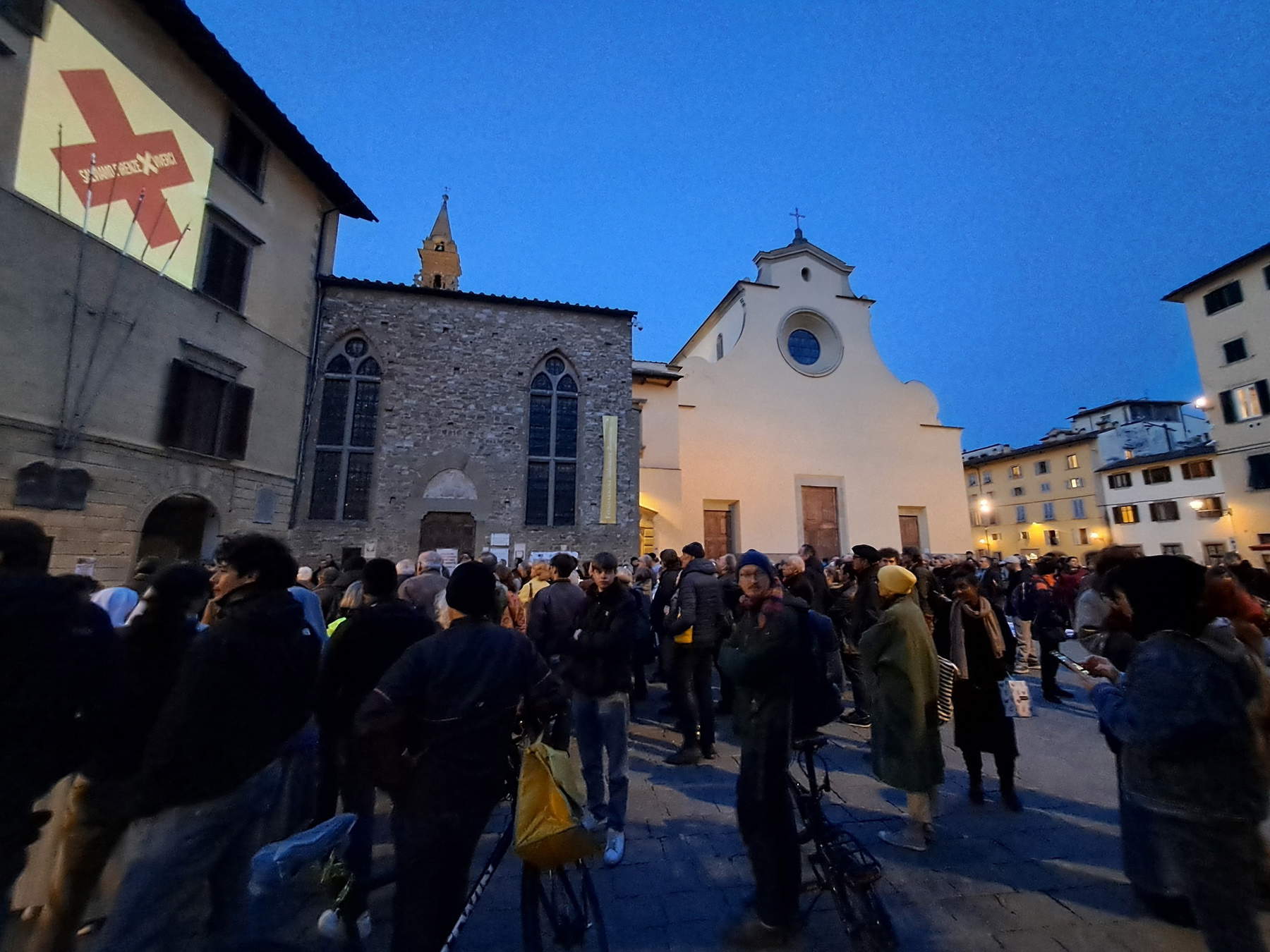
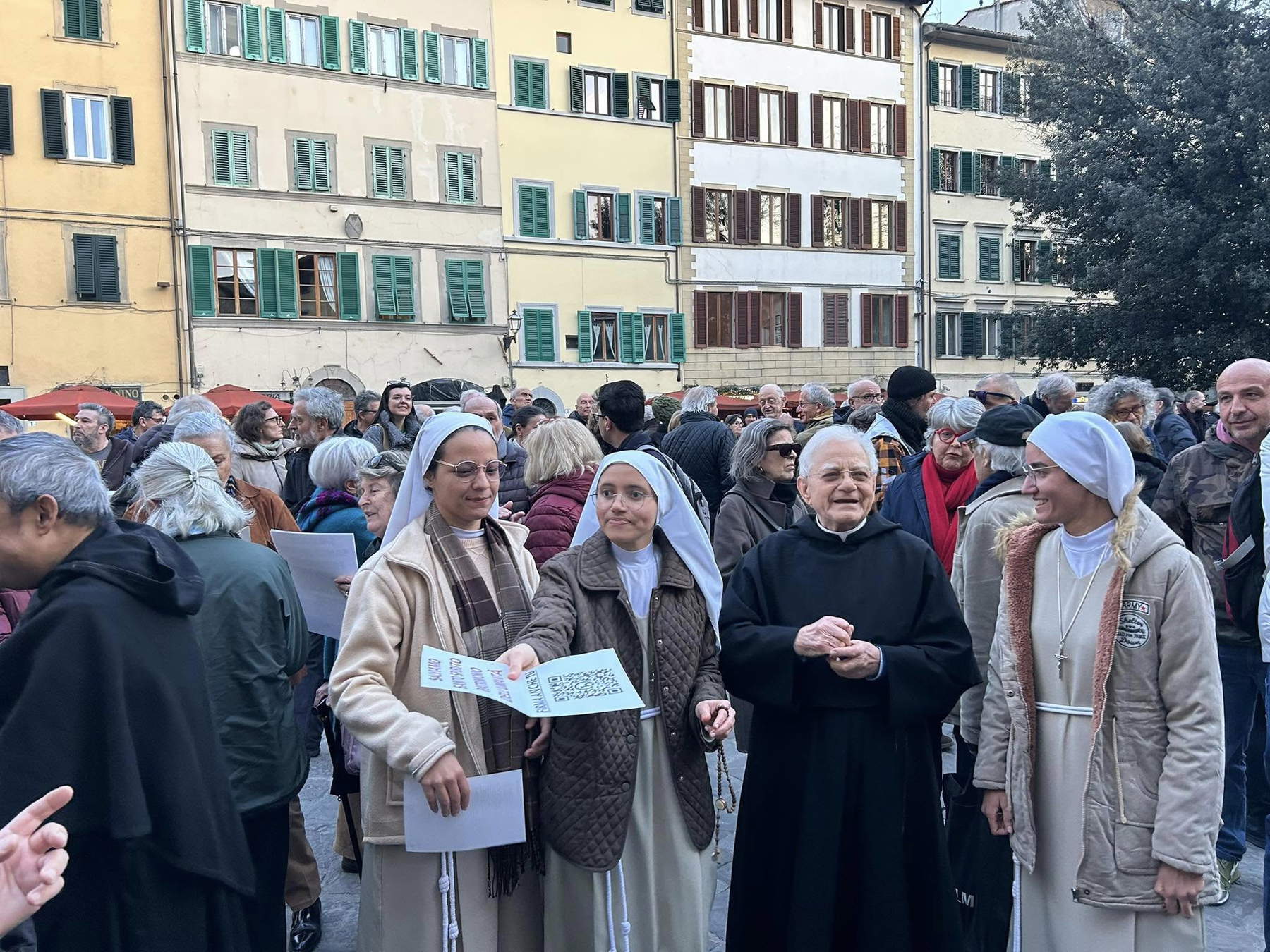
And several intellectuals and prominent figures from the world of culture have also expressed strong support for the friars’ cause. Massimo Cacciari, a philosopher, stressed the historical importance of the place, linked to conferences on religion and humanism, and the need to recover this tradition. He pointed out that the current division of the convent prevents a unified vision of the double cloister and the Poccetti cenacle, adding that Florence, like Venice, suffers from the pressure of tourism and real estate speculation. According to Cacciari, who spoke on the case last March, this may be the last chance to reunify Santo Spirito.
Several personalities intervened as part of a debate in the columns of L’Avvenire: Antonio Natali, professor and former director of the Uffizi, criticized the purely financial interpretation of the concept of “valorization,” arguing that it should mean “giving cultural value to an asset that never had it, or giving it back to an asset that has lost it over time,” as in the case of Santo Spirito. Franco Cardini, a historian, returned to the historical roots of the division and called the separation of the convent an “extraordinary state robbery,” perpetrated through the Leopoldine suppressions. Mario Botta, architect, called attention to the “sublime memory” of the complex, whose unity and historical identity would risk being compromised by the transformation. Eike Schmidt, former director of the Uffizi and candidate for mayor of the center-right in the last elections, suggested that the convent’s premises could be used as a library and/or museum space, citing virtuous examples of the conversion of religious buildings. Sergio Givone, a philosopher, recalled Santo Spirito’s cultural tradition as a “sanctuary of Christian spirituality” and Florentine humanism, supporting prior Pagano’s “commendable, beautiful, opportune project” to transform the spaces into a museum and place of hospitality for students.
Popular mobilization was significant: in addition to the flash mob and conference, a petition on Change.org against the RSA exceeded ten thousand signatures. The affair, however, is far from over. Although the award took place in 2022, the actual contract between Fastpol and Defense Services spa has not yet been signed. This circumstance still offers room for a revocation or reconsideration of the project, as called for by several parties. The Augustinian community, supported by a broad front spanning civil and political society, continues to call for a working table with all stakeholders to discuss the future of the former Ferrucci Barracks, with the hope that a place steeped in so much history and culture can once again become an asset for Florence and its citizens.
 |
| Florence, not just cube: the Renaissance convent of Santo Spirito could become an RSA |
Warning: the translation into English of the original Italian article was created using automatic tools. We undertake to review all articles, but we do not guarantee the total absence of inaccuracies in the translation due to the program. You can find the original by clicking on the ITA button. If you find any mistake,please contact us.